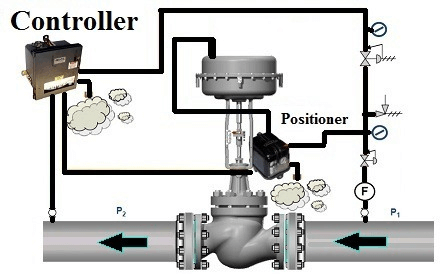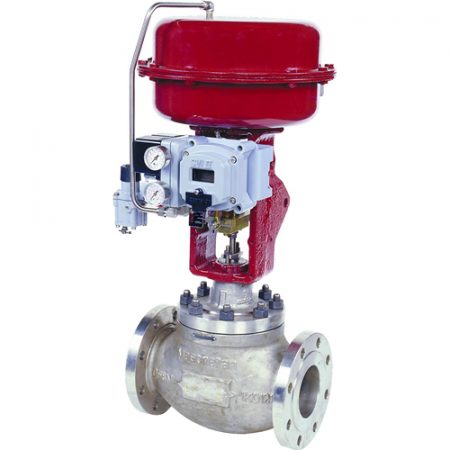
Maximize Energy Savings and Comfort With Advanced Structure Automation Controls
In the realm of modern-day architecture and center monitoring, the combination of sophisticated structure automation controls stands as a pivotal development. The convergence of technology and sustainability has birthed a brand-new period where energy performance, convenience optimization, and functional streamlining are no much longer remote desires but obtainable facts. By using the power of automation, buildings can adjust, respond, and progress in manner ins which were as soon as unimaginable. The possibility for significant energy financial savings and enhanced comfort is not just a guarantee however an opportunity waiting to be met. This standard shift in building administration holds the vital to unlocking a world where ecological conscientiousness and occupant health sympathetically exist together within the walls of our frameworks.
Energy Performance Advantages
Energy effectiveness benefits can significantly decrease energy usage and operational costs in structures. By carrying out energy-efficient methods and modern technologies, structure owners and operators can achieve considerable financial savings while also adding to environmental sustainability. One of the key advantages of enhancing energy efficiency in buildings is the reduction of energy costs. Energy-efficient systems, such as advanced structure automation controls, can maximize using resources like cooling, home heating, and lights, resulting in lower energy expenditures with time.
Additionally, boosted power efficiency can prolong the life expectancy of structure tools and systems. By operating more efficiently, heating and cooling systems, lighting fixture, and other structure components experience much less deterioration, resulting in decreased upkeep and substitute prices. In addition, energy-efficient buildings typically regulate higher home worths and rental prices, offering lasting monetary benefits to proprietors.
Moreover, power effectiveness can enhance occupant comfort and productivity. Effectively managed indoor environments with ideal lights and thermal conditions produce a more helpful and positive workspace, bring about improved worker fulfillment and performance. On the whole, the power performance benefits related to sophisticated building automation controls are multifaceted, including price financial savings, environmental stewardship, and occupant well-being.
Enhanced Convenience Control
Enhancing comfort control in building atmospheres calls for a sophisticated assimilation of innovative automation systems for optimum passenger well-being. By using sophisticated structure automation controls, centers can tailor the interior atmosphere to fulfill the certain requirements and choices of residents. control valves.
By including these advanced controls, structures can not just enhance comfort but likewise boost power effectiveness by optimizing system operations based on actual occupancy and usage patterns. Eventually, prioritizing passenger comfort via advanced automation systems leads to an extra enjoyable and much healthier interior environment.
Functional Efficiency Improvements

Moreover, the application of real-time monitoring and analytics tools makes it possible for building operators to determine energy ineffectiveness and functional anomalies quickly. By continually keeping an eye on energy usage patterns and system efficiency metrics, changes can be made in real-time to optimize energy intake and make sure peak functional effectiveness. control valves. In addition, incorporating demand reaction strategies into building automation controls can better improve operational performance by dynamically adjusting energy use based upon grid conditions and pricing signals
Indoor Environment Optimization
Efficient interior environment right here optimization is an essential aspect of building automation controls, making certain residents' convenience and wellness while making best use of power financial savings. By using advanced sensing units and controls, developing automation systems can continuously readjust and keep track of temperature, humidity levels, air quality, and ventilation to create an optimum indoor atmosphere. Maintaining comfy and consistent problems not only enhances resident fulfillment yet additionally enhances performance and total well-being.
Indoor climate optimization likewise plays a vital role in power effectiveness. By fine-tuning air flow, heating, and air conditioning systems based upon real-time data and occupancy patterns, building automation controls can significantly lower energy intake - control valves. As an example, applying techniques such as demand-controlled ventilation and thermal zoning can aid reduce energy waste while making sure that each area of the structure gets the essential conditioning.

Sustainable Environment Creation
Building automation manages not just maximize interior environment conditions for energy efficiency and owner comfort but likewise lay the foundation for creating a sustainable setting with tactical monitoring of sources and systems. By incorporating advanced structure automation innovations, such as sensing units, actuators, and smart software application, facilities can check and change power use in real-time to decrease waste and decrease their carbon impact. These systems enable anticipating investigate this site maintenance, recognizing prospective issues before they escalate and enhancing devices performance to boost long life and performance.
In addition, lasting setting production prolongs beyond power monitoring to encompass water conservation, waste reduction, and interior air quality enhancement. Structure automation controls can control water usage, detect leaks, and guarantee proper waste disposal techniques, adding to total sustainability efforts. Additionally, by regulating and checking ventilation and filtering systems, these innovations enhance occupant wellness and performance while decreasing energy intake connected with heating and cooling procedures.
Final Thought
Finally, progressed building automation regulates deal substantial benefits in terms of energy cost savings, comfort control, functional effectiveness, indoor climate optimization, and creating a sustainable environment. By implementing these controls, buildings can attain ideal performance while lowering power consumption and improving owner convenience. It appears that the use of advanced automation technology is essential in enhancing structure performance and producing a more lasting future.
Power efficiency advantages can considerably decrease power go now usage and functional costs in buildings. Generally, the energy effectiveness benefits connected with advanced structure automation controls are diverse, incorporating cost savings, ecological stewardship, and passenger wellness.
Furthermore, incorporating need reaction methods into structure automation controls can better improve operational performance by dynamically readjusting energy use based on grid conditions and pricing signals.
Structure automation regulates not just enhance indoor environment problems for power effectiveness and owner convenience but also lay the foundation for creating a lasting atmosphere via tactical administration of systems and resources.In conclusion, advanced building automation regulates deal substantial benefits in terms of power financial savings, comfort control, functional performance, indoor climate optimization, and developing a lasting setting.